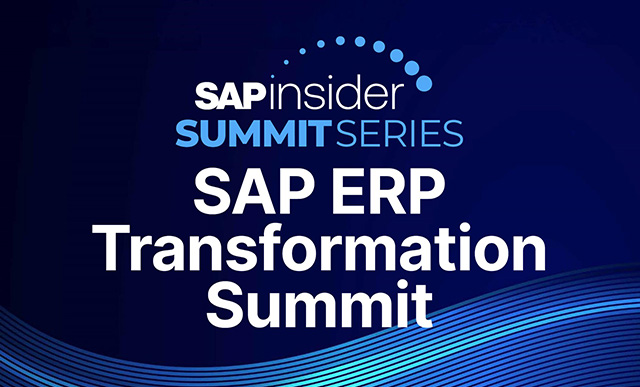SAP SuccessFactors
Filter By
Browse By
- SAP Analytics and AI
- SAP Application Development and Integration
- All SAP Application Development and Integration
- SAP ABAP
- SAP ABAP Development Tools
- SAP ABAP Test Cockpit
- SAP API Management
- SAP BAPI
- SAP Basis
- SAP BRF
- SAP Business Application Studio
- SAP CMS
- SAP Design Studio
- SAP Development Tools
- SAP DevOps
- SAP EAI
- SAP EDI
- SAP Extension Suite
- SAP Fiori
- SAP Fiori Elements
- SAP Integration Suite
- SAP Low Code Application Development
- SAP Low Code Automation
- SAP Netweaver
- SAP Release Management
- SAP UI5
- SAP Web Application Server
- SAP Web IDE
- SAP Business Process Management
- SAP Center of Excellence
- SAP CIO
- SAP Customer Experience
- SAP Data and Data Management
- All SAP Data and Data Management
- SAP BW
- SAP BW/4HANA
- SAP Crystal Reports
- SAP Data Archiving
- SAP Data Center
- SAP Data Governance
- SAP Data Integration
- SAP Data Migration
- SAP Data Quality
- SAP Data Services
- SAP Data Strategy
- SAP Data Visualization
- SAP Data Warehouse Cloud
- SAP DMS
- SAP Document Control
- SAP EIM
- SAP ETL
- SAP ETL Tools
- SAP HANA
- SAP HANA Administration
- SAP HANA Deployment Infrastructure
- SAP HANA Studio
- SAP Master Data
- SAP Master Data Governance
- SAP MDM
- SAP Enterprise Architect
- SAP Enterprise Asset Management
- SAP ERP
- SAP Finance
- All SAP Finance
- SAP Accounting
- SAP AR AP
- SAP Asset Accounting
- SAP Billing Systems
- SAP BPC
- SAP BRIM
- SAP Cash Management
- SAP Central Finance
- SAP Controlling
- SAP COPA
- SAP Cost Center Accounting
- SAP Currency Risk
- SAP e-invoicing
- SAP FICO
- SAP Finance Automation
- SAP Advanced Financial Closing
- SAP Financial Consolidation
- SAP Financial Planning
- SAP FX Risk
- SAP General Ledger
- SAP Global Tax Management
- SAP Hyperion
- SAP Order to Cash
- SAP Payment Processing
- SAP Profitability Analysis
- SAP Rebate Management
- SAP S/4HANA Finance
- SAP SWIFT Compliance
- SAP Treasury Management
- SAP Universal Journal
- SAP Governance Risk and Compliance
- SAP Human Capital Management
- SAP Intelligent Technologies
- SAP Platform and Technology
- All SAP Platform and Technology
- SAP Business Technology Platform
- SAP Cloud
- SAP Cloud Connector
- SAP Cloud Integration Platform
- SAP Cloud Migration
- SAP Cloud Platform
- SAP Cloud Providers
- SAP Cloud Strategy
- SAP Digital Signature
- SAP Container Platform
- SAP HANA Enterprise Cloud
- SAP Digital Asset Management
- SAP Smart Forms
- SAP HEC
- SAP Digital Integration Hub
- SAP Hyperscalers
- SAP Infrastructure
- SAP Messaging
- SAP Quality and Testing
- SAP Security
- SAP Spend Management
- SAP Supply Chain Management
- All SAP Supply Chain Management
- SAP APO
- SAP Asset Management
- SAP Business Network
- SAP Digital Manufacturing Cloud
- SAP Digital Twin
- SAP EWM
- SAP IBP
- SAP Inventory Management
- SAP Label Printing
- SAP Logistics
- SAP Manufacturing
- SAP Manufacturing Automation
- SAP MES
- SAP MII
- SAP MM
- SAP MRO
- SAP MRP
- SAP Order Management
- SAP Plant Maintenance
- SAP PLM
- SAP Production Planning
- SAP S&OP
- SAP SD
- SAP SPM
- SAP Supply Chain Planning
- SAP Track and Trace
- SAP Transportation Management
- SAP System Administration
What is SAP SuccessFactors?
SAP SuccessFactors is SAP’s cloud-based suite of human resources software. The SAP SuccessFactors suite is traditionally most known for its talent management tools and offers core HR capabilities through Employee Central and payroll capabilities through Employee Central Payroll.
While SAP still has many customers running its legacy on-premise SAP ERP HCM solution, SAP SuccessFactors is SAP’s primary focus for Human Capital Management (HCM) and Human Experience Management (HXM). As a result, SAP now focuses most of its HR technology innovation and development resources in the HR space on SAP SuccessFactors. Additionally, the vendor plans to end mainstream maintenance for SAP ERP HCM in 2027.
Modules and offerings within the SAP SuccessFactors suite include:
What is SAP SuccessFactors?
SAP SuccessFactors is SAP’s cloud-based suite of human resources software. The SAP SuccessFactors suite is traditionally most known for its talent management tools and offers core HR capabilities through Employee Central and payroll capabilities through Employee Central Payroll.
While SAP still has many customers running its legacy on-premise SAP ERP HCM solution, SAP SuccessFactors is SAP’s primary focus for Human Capital Management (HCM) and Human Experience Management (HXM). As a result, SAP now focuses most of its HR technology innovation and development resources in the HR space on SAP SuccessFactors. Additionally, the vendor plans to end mainstream maintenance for SAP ERP HCM in 2027.
Modules and offerings within the SAP SuccessFactors suite include:
- SAP SuccessFactors Employee Central (Core HR)
- SAP SuccessFactors Employee Central Payroll
- SAP SuccessFactors Employee Central Service Center
- SAP SuccessFactors Recruiting
- SAP SuccessFactors Onboarding
- SAP SuccessFactors Performance & Goals
- SAP SuccessFactors Compensation
- SAP SuccessFactors Learning
- SAP SuccessFactors Succession & Development
- SAP SuccessFactors Workforce Analytics
- Employee Experience Management with SAP Qualtrics
Key SAP SuccessFactors Considerations for SAPinsiders
- SAP is focused on integrating SAP SuccessFactors and its other cloud applications into its broader set of offerings. This focus is especially of interest to organizations using a variety of SAP tools. As companies adopt cloud solutions, integration between those products and the rest of an organization’s technology stack can be a challenge. SAP CEO Christian Klein noted that SAP has been working to bring the same integration experience between SAP SuccessFactors and other apps that traditional SAP ERP HCM had with the on-premise SAP ERP suite of applications.
- Managing cloud releases is different than on-premise releases. SAP SuccessFactors releases updates twice per year, and these updates often provide significant changes to functionality. Most changes are not mandatory, but customers seeking to get the most out of their cloud systems should implement updates where possible. Doing so requires a release management strategy to track the latest updates and encourage adoption. Most updates can be added to SAP SuccessFactors by opting in, a stark change from on-premise releases, which require more technical work.
- Self-service is an important component of cloud HR tools like SAP SuccessFactors. The most successful companies in their HR strategies are utilizing self-service. For example, employee and manager self-service related to time and attendance and performance management are likely to create better employee experiences and generate more efficient HR processes by removing the reliance on an HR employee to complete related tasks and paperwork. In addition, there is a possibility for self-service in more HR areas such as onboarding and learning.
499 results
-

How SAP Solution Extensions Help Compliance with the General Data Protection Regulation (GDPR)
Reading time: 3 mins
Failure to comply with the General Data Protection Regulation (GDPR) has dire consequences for businesses, including loss of reputation and fines. This article explains how an organization can use SAP Solutions Extensions to track personal data flow, control users’ access to applications and data, safely share data with partners, and protect application codes used for…
-

Solve Deep Business Issues Quickly and Easily with SAP S/4HANA Cloud Applications
Reading time: 3 mins
This article provides an overview of cloud-based solutions that SAP Solutions Extensions offer for HR, finance, and industry-specific business processes. It describes the benefits these solutions offer, such as streamlining global HR processes; protecting data, applications and interactions; and improving efficiency of processes for industries such as retail and fashion management and utilities. Membership Required…
-

Paving the Way to SAP S/4HANA Cloud
Reading time: 9 mins
With SAP S/4HANA Cloud, SAP brings the advantages of the cloud to ERP software with a suite of solutions that paves the way to digital, integrated processes across your business. So how does SAP S/4HANA Cloud integrate into existing software solution landscapes to enable end-to-end business processes? What options are available to support these integrations…
-
-

Consumption-Based SAP Cloud Platform Experience Delivers Agility and Full Transparency into Usage
Reading time: 6 mins
At the beginning of a new project, it can be difficult for IT departments to predict sizing requirements with complete certainty. This drives companies toward more flexible cost models that allow software to be available sooner and with greater scalability. Learn how a new consumption-based experience for SAP Cloud Platform gives customers the simplicity, agility, and…
-

SAP S/4HANA Finance: What’s in a Name?
Reading time: 13 mins
Finance is currently at the forefront of technology innovations within SAP. By being the first line of business to re-architect the core finance and controlling capabilities to leverage the capabilities of SAP S/4HANA, finance professionals can increase their organizations’ efficiency through automation, thereby freeing up their bandwidth to leverage dynamic planning and modeling to provide...…
-

Migrating Custom ABAP Code to SAP S/4HANA
Reading time: 18 mins
Ever since SAP first introduced SAP S/4HANA back in early 2015, there’s been a lot of confusion in the SAP community about what SAP S/4HANA really is and how it will affect the SAP development landscape going forward. With so much misinformation out there, these mysteries can be hard to unravel — especially for customers…
-

What SAP Customers Need to Know for Employee Tax Filing
Reading time: 4 mins
The Federal Tax Cuts and Jobs Act (TCJA), which took effect in January 2018, made significant modifications to both corporate and individual taxes. In September 2018, the IRS announced that it would mandate the use of a revised Form W-4 revisions on January 1, 2020. The 2020 version is expected to fully reflect tax law…
-
-

Turn Any-Sized Data Volume into Business Value: Discover the Power of SAP Data Warehouse Cloud
Reading time: 13 mins
Data volumes today are growing exponentially due to the various ways that data is being produced. SAP customers are being inundated with information as more and more data is arriving into hybrid environments of on-premise and cloud systems from various ERP solutions, data lakes, customer feedback via mobile apps, and social media interactions, to name…
-

- SAP MII
 Premium
Premium
Lion Improves Levels of Integration and Automation with SAP Manufacturing Integration and Intelligence (SAP MII)
Reading time: 5 mins
This research brief examines how Lion improved automation and IT/OT integration in its manufacturing plants. In Lion’s case, the company digitized and automated a manufacturing plant in New Zealand, but a best of-breed strategy for all their enterprise solutions had left them with dozens of different IT solutions and a complicated organic IT architecture that…
-

- SAP Cloud Migration
 Premium
Premium
Catalyzing the Cloud Transition: What It Means for You
Reading time: 10 mins
In mid-2019, SAPinsider reported that while the vast majority of the SAP community is somewhere along the journey of transitioning its enterprise resource planning to the cloud, many companies are still at an early stage. However, recent moves at SAP signal a strong interest in catalyzing that transition and, in turn, it has some SAP…
Become a Member
Unlimited access to thousands of resources for SAP-specific expertise that can only be found here.
Become a Partner
Access exclusive SAP insights, expert marketing strategies, and high-value services including research reports, webinars, and buyers' guides, all designed to boost your campaign ROI by up to 50% within the SAP ecosystem.
Upcoming Events
-

SAPinsider ERP Transformation Summit
October 22 - 23, 2025
New Orleans, Louisiana
United States
View Event
Related Vendors
Your request has been successfully sent

